Measurement Chapter Notes | Mathematics for Year 8 PDF Download
| Table of contents |

|
| Introduction |

|
| Measuring Length |

|
| Measuring Weight |

|
| Measuring Capacity |

|
Introduction
Measurement is like a fun way to explore the world around us! Imagine using your hands, feet, or even everyday objects like paper clips to figure out how long, heavy, or full something is. In this chapter, we learn how to measure things using non-standard units, which are simple and easy tools we can find anywhere. Let’s dive into measuring length, weight, and capacity in a way that makes learning exciting!
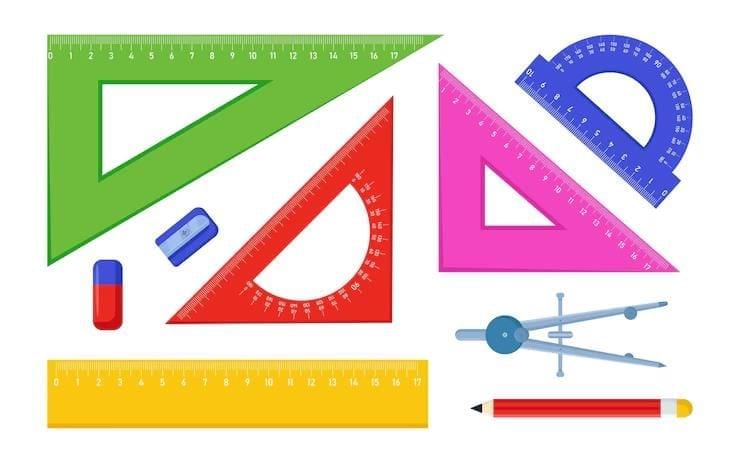
Measuring Length
- Length tells us how long an object is.
- We can use body parts like handspan, arm length, digit/finger, footspan, palm, pace, or cubit to measure length.
- These are called non-standard units because they vary from person to person.
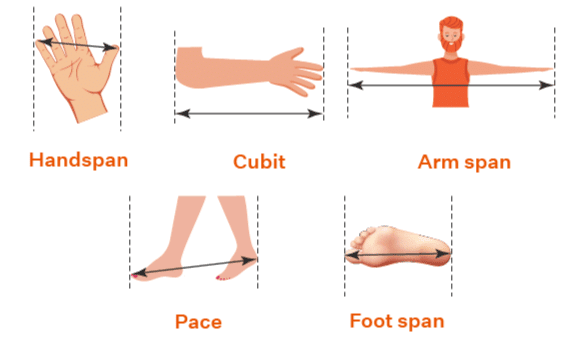
Steps to measure length using body parts:
- Choose a body part (like handspan or footspan).
- Place it along the object, starting from one end.
- Count how many times the body part fits along the object’s length.
- Record the number as the length in that unit.
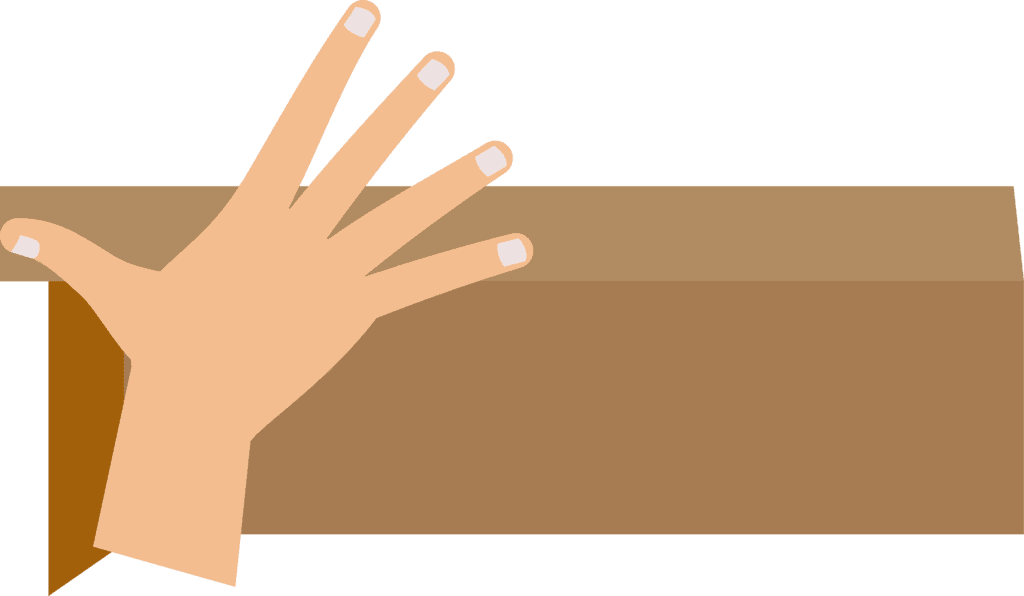
Using non-standard objects:
- We can also use objects like paper clips, ice cream sticks, or toothpicks to measure length.
- Place the objects end-to-end along the item.
- Count how many objects are needed to match the length.
Example: To measure a pen, place paper clips end-to-end along its length. If it takes 4 paper clips, the pencil’s length is equal to the total length of 4 paper clips.
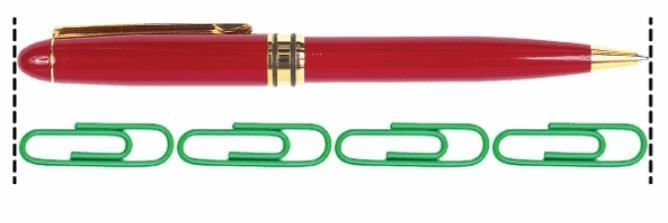
Measuring Weight
- Weight tells us how heavy or light an object is.
- We can use non-standard units like stones, pebbles, marbles, or spoons to measure weight.
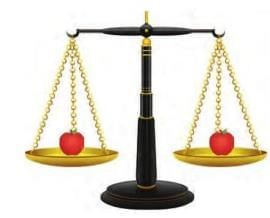
How a weighing balance works:
- A balance has two pans that are equal when the weights in both are the same.
- If one pan has a heavier object, it moves down, and the lighter pan moves up.
Making a simple weighing balance:
- Take two plastic or thermocol plates and make three holes near the edges of each.
- Tie six equal-length strands of wool or thread to the holes (three per plate).
- Tie the strands of one plate to one side of a hanger and the other plate to the opposite side.
- Secure the threads with tape to balance both plates.
- Use stones, pebbles, or marbles as weights to measure objects.
Steps to measure weight using a weighing balance:
- Use a weighing balance with two pans.
- Place the object to be weighed on one pan.
- Add non-standard units (like pebbles) to the other pan until both pans balance.
- Count the number of non-standard units used to balance the pans.
Note: Non-standard weights give approximate results, not exact weights.
Example: To weigh a toy, place it on one pan of the balance. Lemons to the other pan until they balance. The number of Lemons used is the weight of the toy in Lemons.
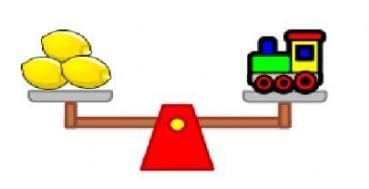
The weight of one toy is equal to three lemons.
Measuring Capacity
- Capacity is the amount a container can hold, like water, milk, or petrol.
- We use non-standard units like glasses, jugs, or bowls to measure capacity.
- Non-standard units vary because containers come in different shapes and sizes.
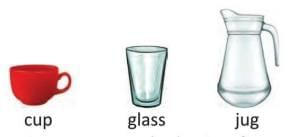
- Steps to measure capacity:
- Choose a smaller container (like a glass) as the non-standard unit.
- Fill the smaller container with liquid and pour it into the bigger container.
- Count how many times you need to fill and pour the smaller container to fill the bigger one.
- The number of smaller containers used is the capacity of the bigger container.
- Example: To measure the capacity of a jug, use a glass to pour water into it. If it takes 5 glasses to fill the jug, the jug’s capacity is equal to 5 glasses of water.
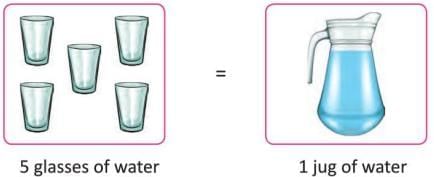
|
69 videos|270 docs|50 tests
|














